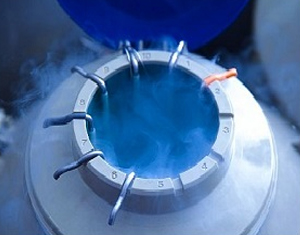Frozen Embryo Transfer (FET)
Monitored placement of your thawed embryos into the uterus to achieve pregnancy
Introduction
If you have undertaken a previous IVF cycle of medication, egg collection and fertilization of embryos for transfer, you will have been advised of the availability of any additional good quality embryos that you may have requested be frozen in preparation for any subsequent treatment. Your embryos will be cryopreserved (frozen) and stored on site at our clinic. Our laboratory uses the highly successful technique of Vitrification to freeze the embryos and hence the survival rates of embryos are in excess of 95%. The pregnancy rates from Vitrified (frozen) embryos is as good as fresh transfers if they survive the thawing.

Why?
If a previous IVF cycle was not successful, you suffered from OHSS within a cycle or you now wish to add a sibling to your family, We can prepare you for a frozen embryo transfer using your stored embryos.
IVF treatment using FET is also recommended where your fertility may be at risk owing to your reproductive organs likely being damaged during cancer treatments by allowing you to preserve your fertility prior to commencement of any such treatment.
How?
You won’t need to undergo further ovarian stimulation or a full IVF cycle again as we will already have your embryos on site from your previous cycle. These embryos will be thawed and assessed to check their suitability before they can be placed back into your uterus as with your previous IVF embryo transfer.
What happens next?
Once the embryos have been transferred into your uterus, you will be need to continue taking any drugs prescribed in your treatment and wait 16 days before taking a pregnancy test to see if your treatment has been successful. You can continue your day to day activities but we recommend you refrain from any strenuous physical exercise and rest if you feel you need to. The clinic will confirm your pregnancy with ultrasound scans and blood tests before discharging you back to your own GP for antenatal care.
What are the side effects / risks?
This risks of FET are similar to those outcomes of a traditional IVF cycle, including multiple births, ectopic pregnancies and miscarriage. Your consultant will discuss any risks that may be relevant to your individual history and circumstances and can answer any questions you may have. If at any time you are concerned, please do contact the clinic for advice. There is a very small risk that none of the frozen embryos may survive the freezing and thawing procedure in which case the cycle would need to be abandoned.
